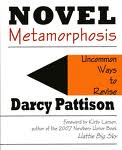Summary of changes: Build on strengths of voice, rhythm, dialogue

With the first Dutton editor, Myracle cut two chapters, added two chapters, strengthened sibling relationships, fleshed out a couple characters, and adjusted the main characters attitudes.
When Julie Strauss-Gabel took over the project, they worked to define the emotional argument, strengthen the emotional arc, demonstrate shifting friendships earlier, write a stronger new chapter, omit a chapter, move events around, and strengthen the time line.
Prevailing attitude of author during these changes: Interest Enthusiasm Willing to solve problems Sense of play Trust of editorial judgment
Dutton editor Julie Strauss-Gabel says the first thing that grabbed her attention about Lauren Myracle’s Eleven, was its strong voice. (The sequel, Twelve was released March, 2007. Myracle is also the author of L8r, G8r, and other Internet Girls novels) Though Strauss-Gabel came to the project late (the editor who acquired the manuscript and worked on early revisions had moved to another publishing house), she acknowledged that Eleven would certainly have caught her eye from the start.
Discussing the strengths of the story, Strauss-Gabel said, “Lauren really knew her main character. Winnie was flamboyant and had a great sense of self.”
“Totally DEAD ON” is how Strauss-Gabel described the character relationships. “The dialogue and rhythms between them took me right back to sixth grade (a sometimes very scary place to be!).”
Myracle had already cut two chapters, added two chapters, worked on the sibling relationships, fleshed out a couple characters, and adjusted the main characters attitudes. Building on the revision that had already been done, Myracle and Strauss-Gabel worked together to further define the “emotional argument” of the story, addressing the plot as it served the emotions of the story and moving some events to create a stronger emotional arc. The shifting friendships, so typical of eleven year olds, also had to be demonstrated earlier and stronger.
The revisions involved a new chapter, omitting another chapter, moving other events around, and strengthening the time line to better hold together the episodic nature of the story. Myracle responded to the ongoing revisions process with interest and enthusiasm.
Strauss-Gabel says, “A great reviser takes on the challenge of problem solving.
The author says, “I accept that I need to play with this.”
Strauss-Gabel and Myracle continue to build on their strong working relationship-including their ability to trust each other through the revision process-on future projects for Dutton.
Note: Originally published in Children’s Writer’s Guide 2004.